- Home
- Stephen Crane
The Red Badge of Courage Page 2
The Red Badge of Courage Read online
Page 2
Fleming’s ostensible “heroism” throughout the remainder of the novel merely consists of mindless, instinctive, animal-like acts of self-preservation. “He forgot that he was engaged in combating the universe,” the reader learns. “He threw aside his mental pamphlets on the philosophy of the treated and rules for the guidance of the damned.” In the chaos of the retreat, Fleming accosts another soldier who, in a fit of rage, slams his rifle butt against Fleming’s head, inflicting an utterly ironic “red badge of courage.” (That is, the very title of the novel drips with sarcasm.) In the melée, Fleming meets the “tattered soldier,” who embarrasses him with repeated questions about his wound. (Conscience, it seems, is simply a fear of social condemnation, not an innate faculty.) He also crosses paths with the “cheery soldier,” the one figure in the novel who exhibits genuine kindness toward him, though not until they separate does Fleming realize “that he had not once seen his face.” And he again encounters his friend Jim Conklin, the “tall soldier,” whom Fleming watches die from his wound, a genuine “red badge of courage.” The next several chapters reinforce the notions of war as a ruthless Darwinian struggle and violence as the essence of life. In this respect, Crane anticipated such war novels as Norman Mailer’s The Naked and the Dead (1948) and James Jones’s From Here to Eternity (1951).
In the exact center of the novel, the beginning of chapter XIII (of twenty-four chapters), Fleming returns to his regiment. Wilson, now a veteran of combat, exhibits “a fine reliance” and an “inward confidence” in sharp contrast to his friend, who continues to rationalize his conduct the day before: “he had fled with discretion and dignity.” Fleming returns the letters Wilson had entrusted to him to mail in the event of his death, but does so patronizingly: “It was a generous thing.” But he soon rebels against the constant threat of renewed war. He feels “like a damn’ kitten in a bag” or “a kitten chased by boys. . . . It was not well to drive men into final corners; at those moments they could all develop teeth and claws.” The soldiers, to Henry, were akin to “animals tossed for a death struggle into a dark pit.” Once more he responds instinctively to danger. In the next skirmish, he is “not conscious that he is erect upon his feet” during a charge and “not aware of a lull” in the fighting a few minutes later. After the battle, in which the enemy is briefly routed, “It was revealed to him [note the passive voice] that he had been a barbarian, a beast.” More to the point, if he is not a hero (and how could he be, given that his response to danger was neither planned nor deliberate?), “he was now what he called a hero” (italics added). He had fallen asleep and, “awakening, found himself a knight,” at least in his own eyes.
Ironically, at this juncture Fleming learns of his comparative insignificance in the vast scheme of war. Far from the hero of his adolescent dreams, he is reduced to a cipher when he overhears a general order his regiment into battle like sheep to the slaughter. He experiences an epiphany: “the most startling thing was to learn suddenly that he was very insignificant.” The moment recalls one of Crane’s bitterly ironic poems:A man said to the universe,
“Sir, I exist!”
“However,” replied the universe,
“The fact has not created in me
A sense of obligation.”
In a stupor, “unconsciously in advance” of his regiment, Fleming leads his compatriots into battle, though later he has no good idea “why he himself was there. . . . the youth wondered, afterward, what reasons he could have had for being there.” Like other naturalistic characters, Fleming inhabits a non-teleological, non-purposeful universe. Or like other soldiers in combat, he “showed a lack of a certain feeling of responsibility.” The novel is absolutely silent on the issues of slavery or states rights or any other reason usually invoked to justify the war. Rather, the soldiers’ conscious purpose for fighting has been supplanted by primitive emotion or, worse yet, unthinking “patriotism.” Fleming imagines “a despairing fondness” for the flag that symbolizes his nation, so much so that when the color sergeant is killed he “made a spring and a clutch at the pole” to save the emblem from touching the earth. He even eroticizes the Stars and Stripes: “It was a woman, red and white, hating and loving, that called him with the voice of his hopes.” Ironically, Fleming and the other fighters charge within half a hundred feet of victory, not that they realize their failure until later. They are, after all, as pawn-like infantrymen “oblivious to all larger purposes of war.”
Fleming emerges from his so-called “battle madness” in the final chapter of the novel. But the conclusion of the text preserves or sustains its ambiguity. In the fourth to the final paragraph, Fleming declares that “He was a man”—an affirmation of his entry into adulthood, a sentence if read straightforwardly that would support a reading of the novel as an initiation story. But a few lines later, in the penultimate paragraph of the text, the reader learns that “He had been an animal blistered and sweating in the heat and pain of war.” To be a man is to be an animal, it seems. As John Condor concludes, “Far from bringing Henry into a world of freedom where he will operate as a free agent, the last chapter shows him developing new illusions. They are illusions that the battlefield itself exposed: e.g., the fiction that people are free and therefore morally responsible for their actions.”15
In short, The Red Badge of Courage may be read as an anti-war novel much as the movie Patton (1970), for example, may be viewed as an anti-war film. Fleming (=lemming?) may simply be a fool who suffers his illusions unself-consciously, and such a notion required a sophisticated point of view. Crane eschewed both an omniscient narrator who reliably describes the ebb and flow of objective reality and a first-person narrator whose perspective is blinded by the chaos and confusion of war. Instead, he developed a terse, impressionistic, and apprehensional style in which all events are mediated or refracted through Fleming’s consciousness and all the reader finally knows is the play of his imagination. The Red Badge of Courage essentially recounts through Fleming’s impressions the fears of an ironic hero or an anti-hero. Reality exists only insofar as Fleming apprehends it. Not only is there no objectivity to his story, the very notion of reality is a shifting, unstable, and distorted construction of his imagination and defies precise definition. Put another way, Crane had begun to develop naturalistic themes in an impressionistic or pointillistic style. For the record, Crane alluded explicitly to the French impressionists in his sketch “War Memories” (1899). As Sergio Perosa suggests,The Red Badge of Courage is a triumph of impressionistic vision and impressionistic technique. Only a few episodes are described from the outside; Fleming’s mind is seldom analyzed in an objective omniscient way; very few incidents are extensively told. Practically every scene is filtered through Fleming’s point of view and seen through his eyes. Everything is related to his vision, to his sense-perception of incidents and details, to his sense-reactions rather than to his psychological impulses, to his confused sensations and individual impressions.
Perosa adds that such verbs as “to see, perceive, look, observe, gaze, witness, watch, stare, peer, cast eyes, discover, etc., appear on practically every page, indeed, no less than 350 times in this fairly short novel.”16 Or consider this passage in chapter V: “Once he saw a tiny battery go dashing along the line of the horizon. The tiny riders were beating the tiny horses.” Obviously, Fleming perceives the battery at a far distance; he does not literally watch a miniature battery. As James Nagel observes, “This scene represents the simplest form of unreliability in Impressionism in that it is the projection of raw, apprehensive data from the mind of a character.”17 With good reason, Joseph Conrad called Crane “the impressionist” of his age;18 Ørm Øverland has suggested that Crane’s use of color “on many points bears close resemblance to the technique of the impressionist painters”;19 and Eric Solomon has suggested that Red Badge “should be termed an impressionistic-naturalistic novel” or vice versa.20
In battle, Fleming perceives an absurd world without any meaning or explanations save fo
r those he invents. According to Thomas L. Kent, “Henry understands neither the behavior of his commanders nor his situation; in his perplexity, he finds the meaning of his experience incomprehensible.”21 From the second sentence of the novel, the soldiers feed on scuttlebutt and gossip, not information, as if to illustrate the adage that in war the first casualty is truth. As late as chapter XVI the riflemen in the trenches hear rumors “of hesitation and uncertainty on the part of those high in place and responsibility.” In chapter III, even before his first taste of combat, Fleming distances his despair at two removes: “Once he thought he had concluded that it would be better to get killed directly and end his troubles” (italics added). He continually rationalizes his behavior, as in chapter VI: “He felt that he was a fine fellow.” To the extent that values exist, moreover, they are experiential, not transcendental, such as the “subtle battle brotherhood” among the soldiers or the “mysterious fraternity born of the smoke and danger of death.” Confronted by evidence of his utter insignificance in a non-teleological universe, he adopts new illusions rather than confront the truth about his life.
Nor does it seem he ever learns to temper his knee-jerk reaction to crisis. In the sequel to Crane’s novel, the short story “The Veteran” (1896), set thirty years after the war, Fleming responds to an emergency like an old fire horse put out to pasture. Discharged from the army an “orderly sergeant,” ironically enough, “old Fleming” has become a prosperous farmer with an aged wife, several sons, and at least one grandson. When his barn catches fire, he responds with hardly a word to save his cows and one of his hired men. But in the excitement he has forgotten the colts at the back of the barn. When he foolishly rushes back to save “the poor little things,” as he “absent-mindedly” calls them, the roof collapses. Reacting to danger unthinkingly as in the novel, old Fleming fails to understand that he faces “sure death” or virtual “suicide” (as his neighbors realize) if he tries to rescue his colts. Like the novel, this brief sequel challenges conventional notions of courage. Its final paragraph, with its paean to “the old man’s mighty spirit, released from its body” that “swelled like the genie of fable,” may be read as an ironic tribute. Fleming’s bravery may be no more real than an imaginary elf.
Ever the iconoclast, Crane demythologized the Old West in “The Bride Comes to Yellow Sky” (1898) and “The Blue Hotel” (1898) just as he debunked the nobility of war in The Red Badge of Courage and his bitterly ironic poem “Do Not Weep, Maiden, for War is Kind” (1896). He seems to have followed the lead of Mark Twain’s Roughing It (1871) in ridiculing the legendary West, though he insisted he did “not care” for Twain’s long works: “Four hundred pages of humor is a little bit too much for me.”22 In the former story, Crane in effect parodied the climactic gunfight in The Virginian (1902) four years before Owen Wister published his novel. The hero Jack Potter, town marshal of Yellow Sky, returns to the west Texas town with his new bride, the avatar or agent of eastern civilization, only to confront the gunslinger Scratchy Wilson, the “last one of the old gang that used to hang out along the river,” as he steps off the train. Whereas the Virginian must duel and kill the villain Trampas against the wishes of his betrothed, Potter confounds Wilson in his drunken reverie by explaining that he is unarmed and recently married, whereupon Wilson anticlimactically shuffles away, leaving “funnel-shaped tracks in the heavy sand.” This final image, as many critics have observed, connotes an hourglass, suggesting that with the marshal’s marriage the gunslinger belongs to an old order whose time has passed. Potter’s bride is not the first bride in the town; the narrator reports that “people in Yellow Sky married as it pleased them.” For the marshal to take a wife, however, means that he has brought a modicum of order and security to the frontier and he is in little danger of dying young at the hands of outlaws. Even though she is the title character, his bride remains unnamed because her identity is less important than the fact of her marriage and arrival in the town.
Similarly, in the latter story Crane parodied dime novel westerns with their stock characters and sensational plots. Set in a symbolic world of blind chance, “The Blue Hotel” features a stereotypical Swede who is stupid, innocent, and easily intoxicated. (“The Veteran” also depicts a Swedish hired hand who drives a buggy into town “to get drunk.”) Registering at a hotel in Fort Romper, Nebraska, with its connotations of children at play, the Swede believes he has strayed into the Wild West. Conditioned by his reading of dime novels much as Henry Fleming has been influenced by Homer’s Iliad, he assumes that “many men have been killed” in the parlor of the hotel and he expects “to be killed before I can leave this house!” The hosteler Scully (= skull-y), a town booster, tries to reassure him that Fort Romper is booming, and, with its plans for a line of electric street cars, a rail spur from a neighboring city, four churches, a brick school, and a factory, is destined to become a “met-tro-pol-is.” Even the dim-witted cowboy Bill, a caricature of the cowboy of western legend, realizes that “This is Nebrasker,” not a distant western town. When the Swede, drunk on Scully’s whiskey, accuses Scully’s degenerate son Johnnie of cheating at cards, however, the game morphs into a fistfight in the blizzard outside the hotel. That is, as James Ellis explains, the story shifts “from the microcosmic card game of High-Five in which the players play their own cards to the macrocosmic game of chance in which the players themselves become cards played upon by Fate.”23 After he whips Johnnie, the Swede quits the hotel for a nearby saloon, enduring en route the vicissitudes of weather. “We picture the world as thick with conquering and elate humanity,” Crane writes,but here, with the bugles of the tempest pealing, it was hard to imagine a peopled earth. One viewed the existence of man then as a marvel, and conceded a glamour of wonder to these lice which were caused to cling to a whirling, fire-smote, ice-locked, disease-stricken, space-lost bulb.
Crane never wrote a more sardonic sentence. Entering the saloon, the Swede picks a fight with a professional gambler, a decadent version of the chivalrous gamblers John Oakhurst and Jack Hamlin in Bret Harte’s fiction, who stabs and kills him. The cash machine on the bar offers a heavy-handed conclusion to the story: “This registers the amount of your purchase.” It seems that the Swede’s death has been foreordained.
Or is it? Characteristically, Crane offers a “lady or the tiger” conclusion to the tale, one of them rigidly deterministic, the other an affirmation of human agency. In the final chapter, the cowboy and the journalist Mr. Blanc, a reporter (and Crane persona) but not a participant in events, cross paths several months later. Blanc explains that Johnnie was indeed cheating at cards, and so in failing to intervene in the fistfight all of the principal characters “have collaborated in the murder of this Swede.” (The stupid cowboy utters the last words in the story in reply: “Well, I didn’t do anythin’, did I?”) In this alternative ending, Crane explains the Swede’s death according to the doctrine of complicity of his mentor Howells. In his novel The Minister’s Charge (1887), Howells has a character declare that “No man . . . sinned or suffered to himself alone.”24 Either of these alternative conclusions works, yet they are philosophically incompatible. In effect, by suggesting that either interpretation is possible, Crane illustrates the limitations of any theory of fiction that presumes to explain all of the mysteries of human behavior. Crane once wrote that Howells “developed all alone a little creed of art which I thought was a good one. Later I discovered that my creed was identical with the one of Howells and Garland.”25 He overstated his affinity with “the Dean of American Letters,” however. As he matured as a writer, he became increasingly skeptical about all creeds and ideologies.

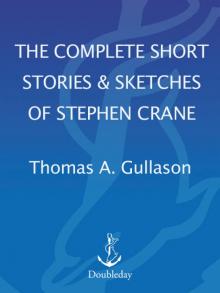 The Complete Short Stories and Sketches of Stephen Crane
The Complete Short Stories and Sketches of Stephen Crane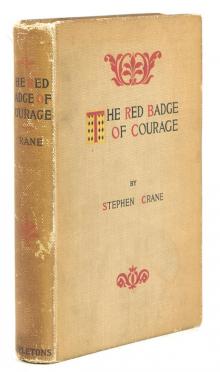 The Red Badge of Courage: An Episode of the American Civil War
The Red Badge of Courage: An Episode of the American Civil War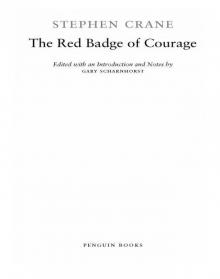 The Red Badge of Courage
The Red Badge of Courage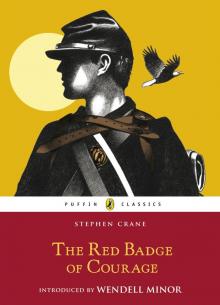 The Red Badge of Courage by Stephen Crane
The Red Badge of Courage by Stephen Crane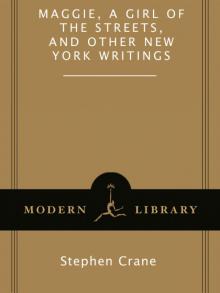 Maggie, a Girl of the Streets and Other New York Writings
Maggie, a Girl of the Streets and Other New York Writings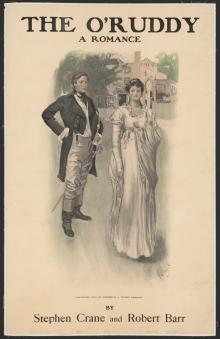 The O'Ruddy: A Romance
The O'Ruddy: A Romance The Third Violet
The Third Violet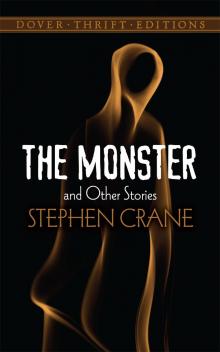 The Monster and Other Stories
The Monster and Other Stories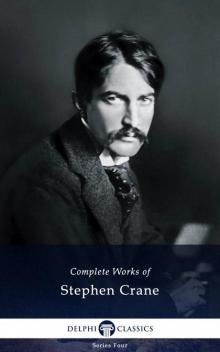 Complete Works of Stephen Crane
Complete Works of Stephen Crane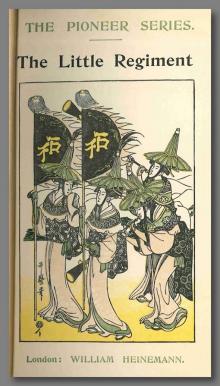 The Little Regiment, and Other Episodes of the American Civil War
The Little Regiment, and Other Episodes of the American Civil War The Red Badge of Courage and Other Stories
The Red Badge of Courage and Other Stories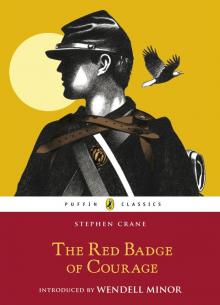 Red Badge of Courage (Puffin Classics Relaunch)
Red Badge of Courage (Puffin Classics Relaunch)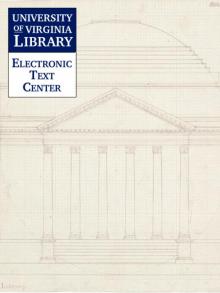 The Fight: Whilomville Stories: XI.
The Fight: Whilomville Stories: XI.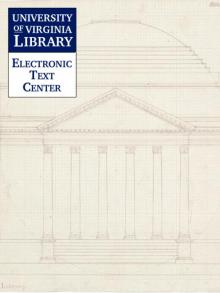 A Man and Some Others.
A Man and Some Others.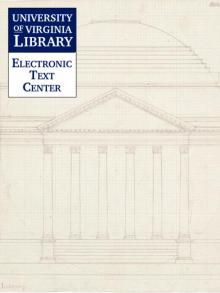 The Monster
The Monster